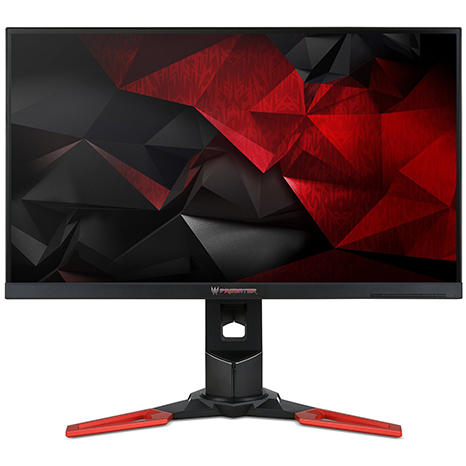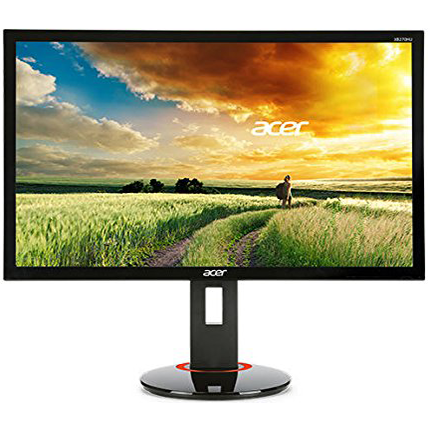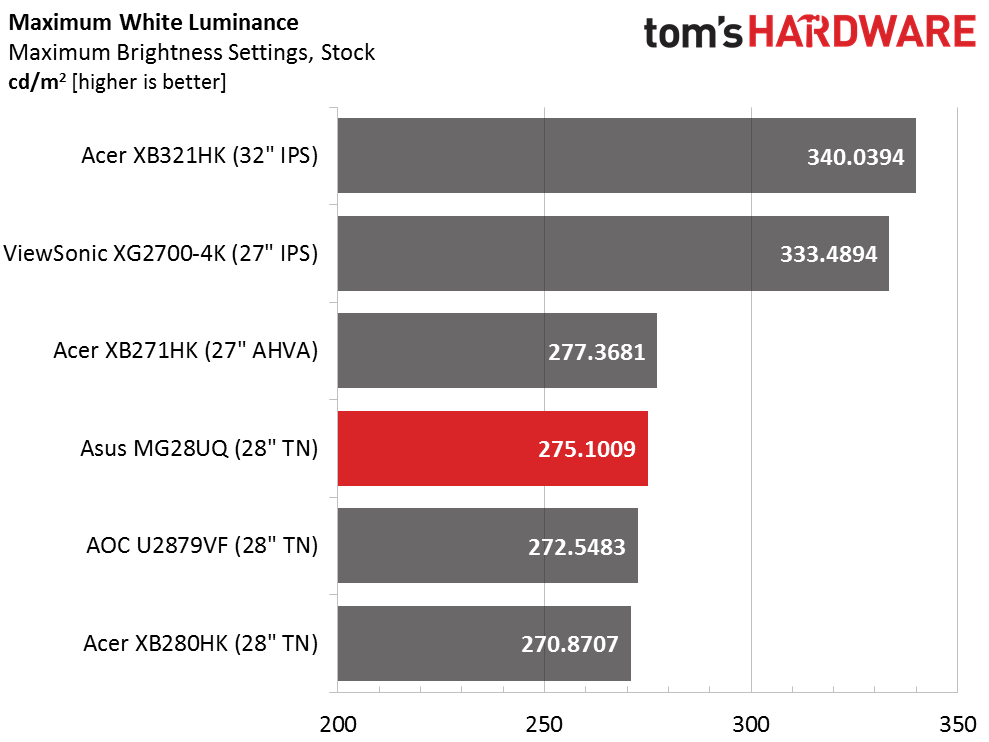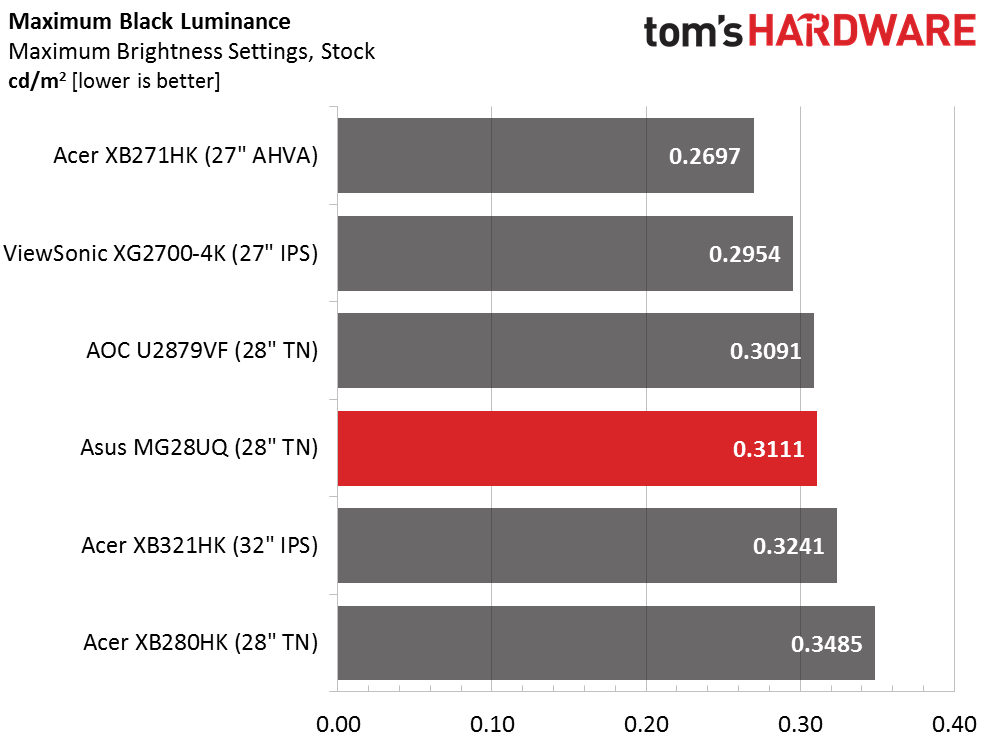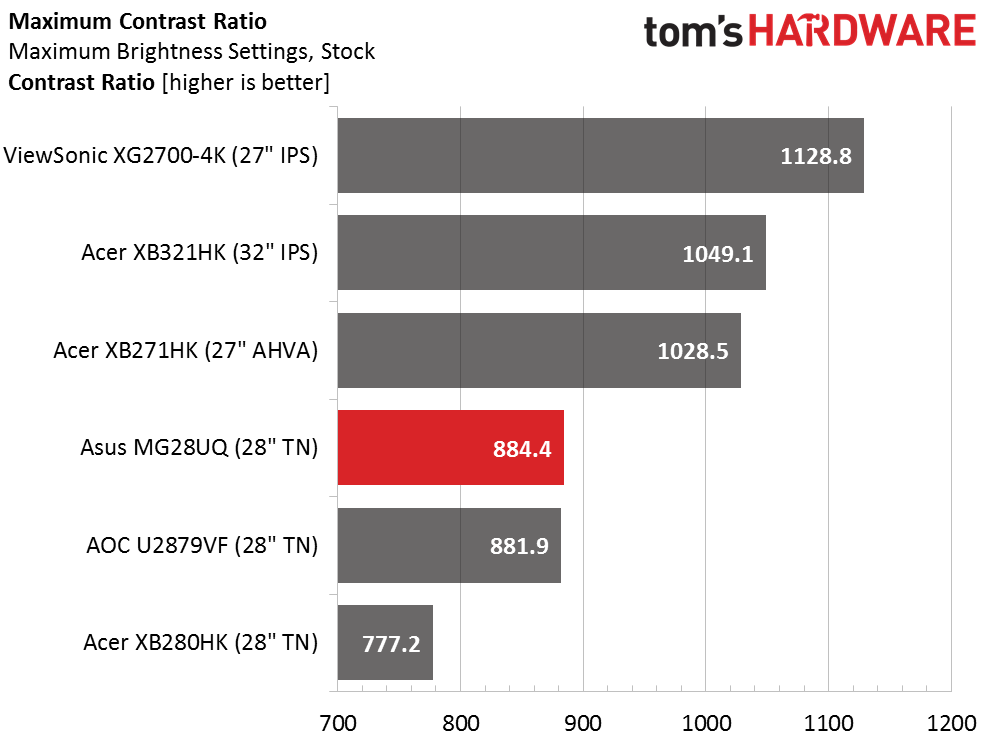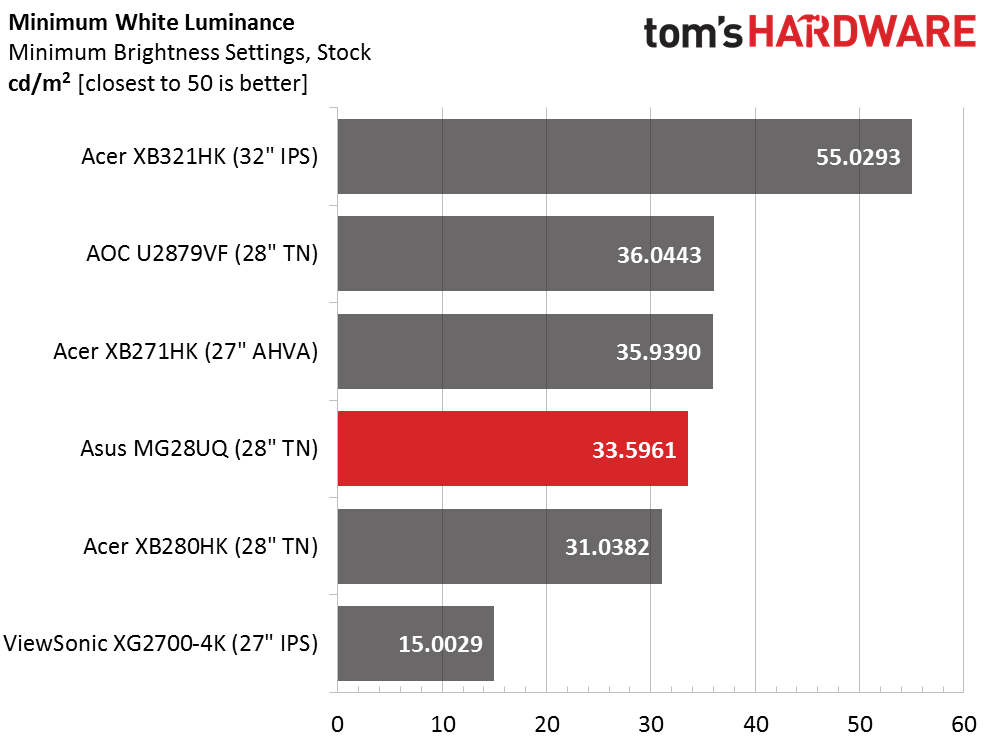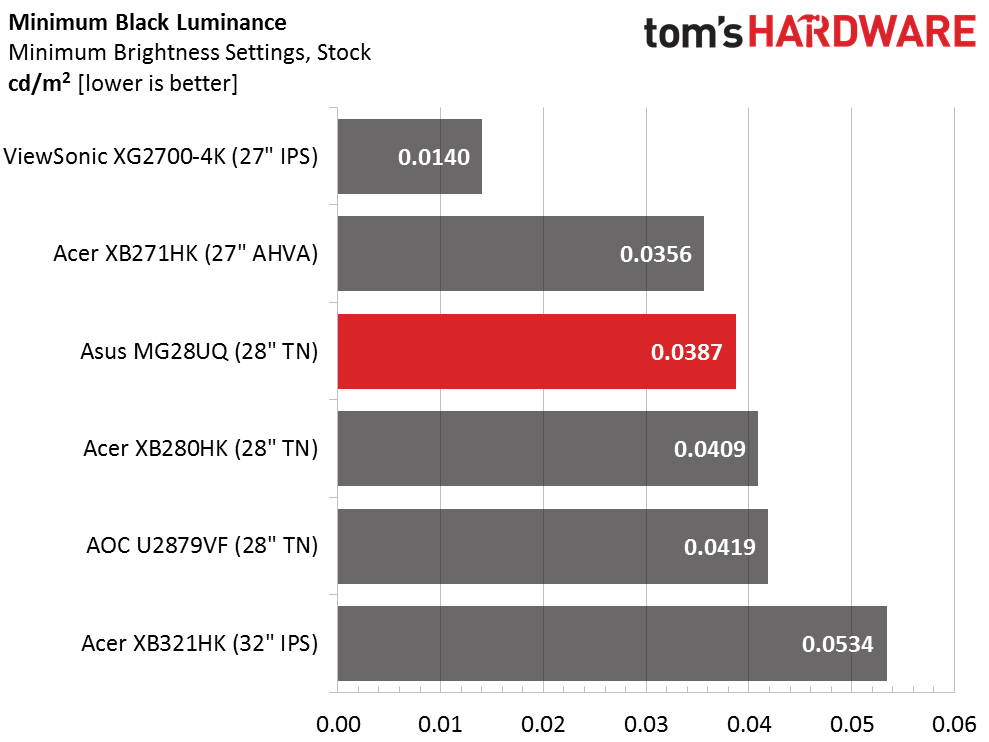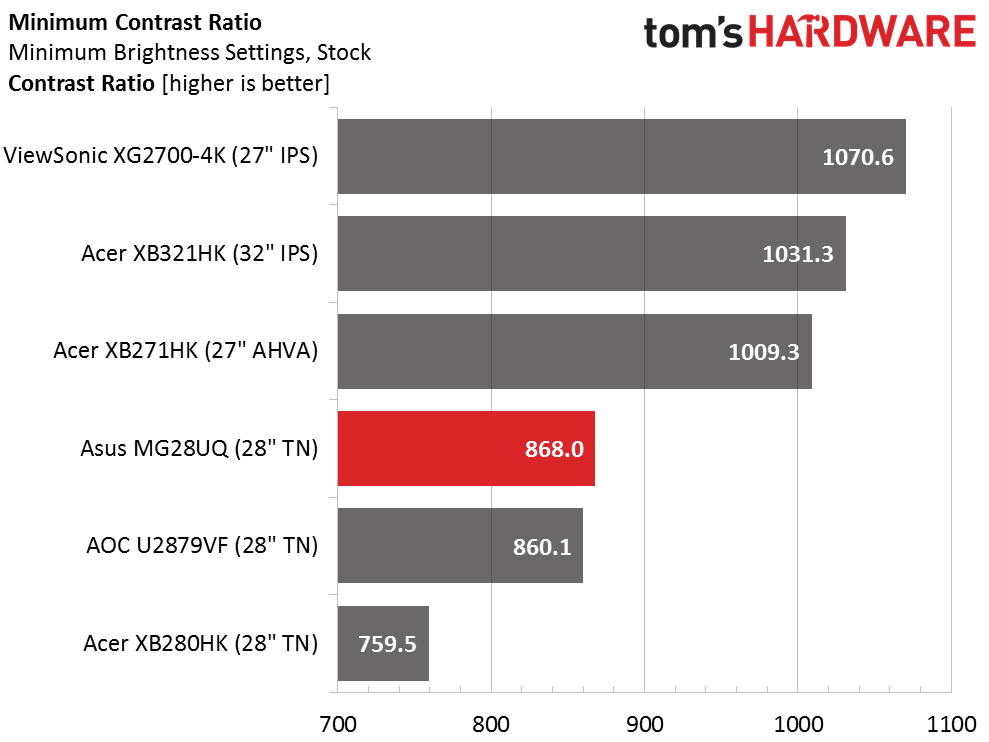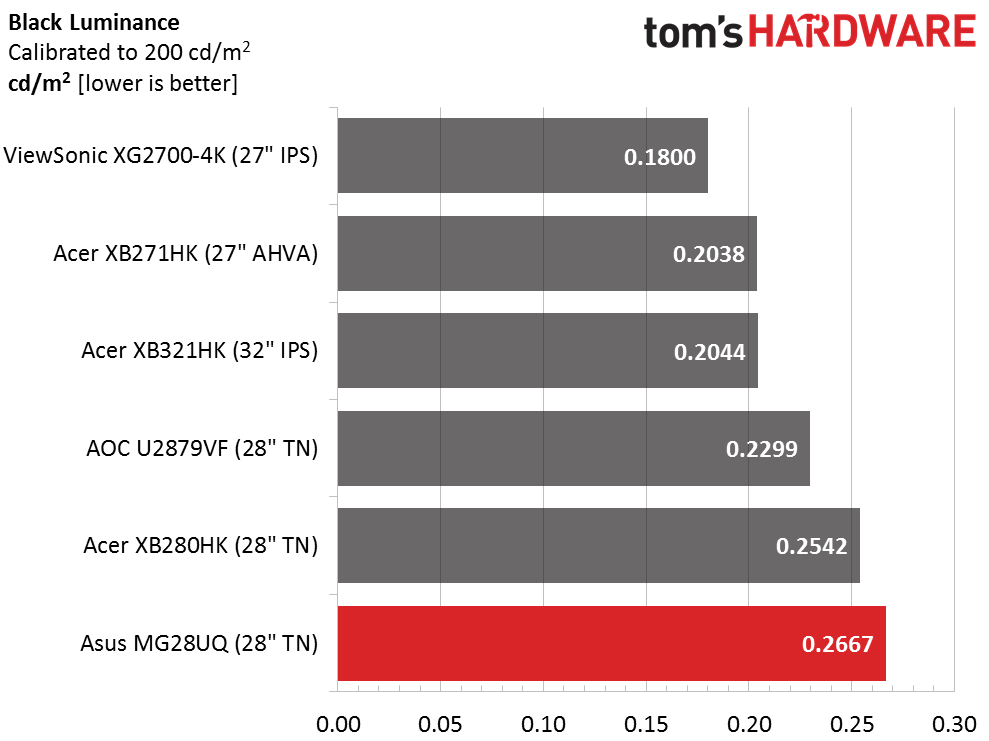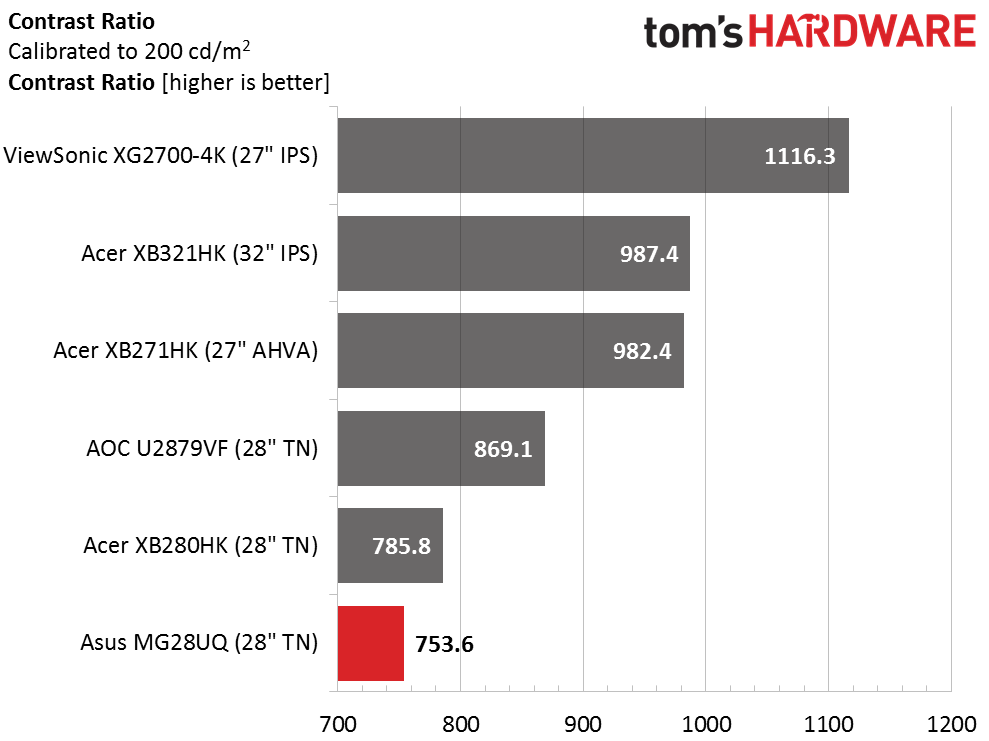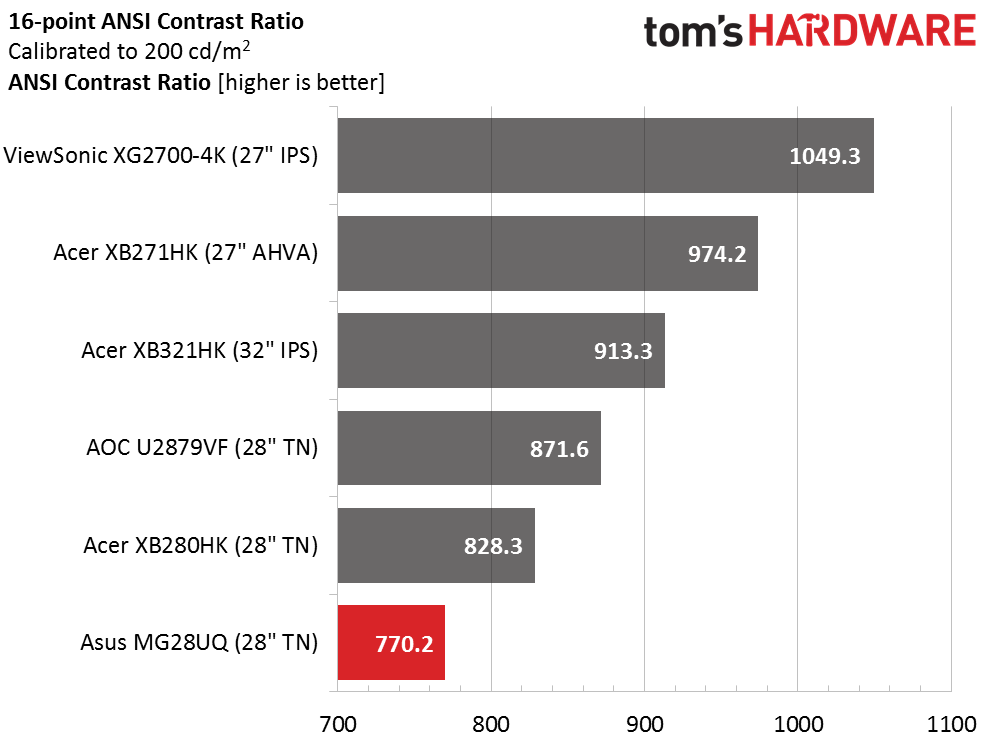Asus MG28UQ 28-inch Ultra HD FreeSync Gaming Monitor Review
Asus MG-series has always represented a solid value alternative to its premium ROG products. Today we’re looking at the MG28UQ, a 28-inch Ultra HD monitor with FreeSync.
Why you can trust Tom's Hardware
Brightness & Contrast
To read about our monitor tests in depth, please check out Display Testing Explained: How We Test Monitors and TVs. Brightness and Contrast testing is covered on page two.
Uncalibrated – Maximum Backlight Level
We finally have six Ultra HD monitors with adaptive refresh in our database and they’re all represented here today. The recently-reviewed Acer Predator XB271HD and XB321HK, along with ViewSonic’s XG2700-4K stand for the IPS category. The remaining screens use TN parts and include Acer’s XB280HK and AOC’s U2879VF.
Asus claims a max output of 330cd/m2 for the MG28UQ but we couldn’t measure a value higher than 275. Perhaps if you turned the contrast slider all the way up, but that would clip detail and destroy white point accuracy. Nonetheless, the panel is plenty bright for typical indoor environments. The anti-glare layer maintains a solid image even when sunlight is coming in the window.
The max black level is mid-pack, though none of these screens will be setting any contrast ratio records. They’re all pretty close in performance.
Contrast is a tad low for our taste, but the other two TN screens fare worse. The top three IPS panels offer greater dynamic range and image depth but that comes at a higher price.
Uncalibrated – Minimum Backlight Level
The backlight doesn’t have to go quite this low. There aren’t too many instances where you’d want to play games or do anything else at an output level of 33.5961cd/m2. To raise brightness to 50cd/m2, move the slider to 11.
The black level tracks with the overall backlight intensity so a third-place finish in this test doesn’t mean better contrast. As you’ll see below, that is fairly consistent.
Get Tom's Hardware's best news and in-depth reviews, straight to your inbox.
Contrast remains reasonably constant for all the monitors in the group. It’s rare that we see more than a 10 percent variation throughout the backlight’s range for any modern display.
After Calibration to 200cd/m2
We had to reduce the contrast slider just a little to improve grayscale tracking and that hurt the calibrated black level. For maximum dynamic range in an Ultra HD monitor, IPS is clearly the better choice. TN offers speed and value but at the sacrifice of image depth.
We could improve this number a little if we turned contrast back up or engaged the ASCR (dynamic contrast) feature. 753.6:1 is the MG28UQ’s native result. If image depth is a deal-breaker for you, IPS is the better choice. The monitor with the best balance of price and contrast performance is the ViewSonic.
ANSI Contrast Ratio
The ANSI test demonstrates that the MG28UQ is a well-made panel, and it actually measures a little higher than its sequential result which is rare. IPS is still the tech to beat though. While the difference is small, contrast is the metric we consider most important when choosing a monitor. Even a little more can make a visible impact on image quality.
Current page: Brightness & Contrast
Prev Page OSD Setup & Calibration Next Page Grayscale Tracking & Gamma Response
Christian Eberle is a Contributing Editor for Tom's Hardware US. He's a veteran reviewer of A/V equipment, specializing in monitors. Christian began his obsession with tech when he built his first PC in 1991, a 286 running DOS 3.0 at a blazing 12MHz. In 2006, he undertook training from the Imaging Science Foundation in video calibration and testing and thus started a passion for precise imaging that persists to this day. He is also a professional musician with a degree from the New England Conservatory as a classical bassoonist which he used to good effect as a performer with the West Point Army Band from 1987 to 2013. He enjoys watching movies and listening to high-end audio in his custom-built home theater and can be seen riding trails near his home on a race-ready ICE VTX recumbent trike. Christian enjoys the endless summer in Florida where he lives with his wife and Chihuahua and plays with orchestras around the state.
-
lugi20 60 hz gaming doesn't appeal to me at any resolution. 1440p at 144 hz or better is really the sweet spot at the moment. I wish companies would focus more on that for gaming.Reply -
QWERASZX ultra wide aspect is nice but jesus ppl there your eyes beg borrow and steal your way to IPS or simmilar stop wasting your time on TN i still have every IPS display iv owned for the last 15 years even an old 19" sony medical display.... NOTHING ---- Nothing else matters video cards come and go but your eyes will only ever degrade Treat them nice although LGs new 65" oled is really contrastyReply -
rwinches So the AOC is the the 'best deal' at this point in time as 4K @ 60 is what current graphics cards can manage. It comes factory calibrated. You could buy three for a little more than the price of one of the others.Reply
Not ready to change my triple AOC 24" 1080 @ 144 setup just yet though. I do want freesync, but so much new tech is on it's way so...
http://www.tomshardware.com/reviews/aoc-u2879vf-28-inch-4k-uhd-freesync-monitor,4575.html -
whitelightsaber How long is it going to be before I see the 32 inch 1440p 144hz 1ms ips monitor I have been dreaming of??Reply -
picture_perfect Reply18415465 said:60 hz gaming doesn't appeal to me at any resolution. 1440p at 144 hz or better is really the sweet spot at the moment. I wish companies would focus more on that for gaming.
18416803 said:So the AOC is the the 'best deal' at this point in time as 4K @ 60 is what current graphics cards can manage. It comes factory calibrated. You could buy three for a little more than the price of one of the others.
Not ready to change my triple AOC 24" 1080 @ 144 setup just yet though.
18417442 said:How long is it going to be before I see the 32 inch 1440p 144hz 1ms ips monitor I have been dreaming of??
Ditto. Manufacturers push 4K because it generates more revenue. It doesn't matter we the consumers pay more for a worse experience. They figured out nobody wanted 3Dtv. Maybe someday they'll figure this out: 4K still not ready for prime time.
-
ledhead11 For those who haven't had time to spend with one. Cinema 4k(4096x2160) w/ 10 bit, I have a LG MU 31", color is something to experience. I have an Asus 278q(1440p 144hz) 8 bit color depth. I love it but I can definitely see a difference in the spectrums. For fast I love my Asus, but to look around and take it all in the LG rocks.Reply
Bottom line, its not just about FPS. We need a 4k, 10bit, 144hz and that will take DP 1.3 or DP 1.4. -
zthomas I got a acer g-sync 28.. price is about the same.. they sorta look alike to.. these new monitors will up your gaming .. and skills too..Reply
